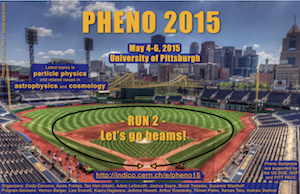Speaker
Louis Lello
(University of Pittsburgh)
Description
We study the production of sterile neutrinos in the early universe from $\pi \rightarrow l \nu_s$ shortly after the QCD phase transition in the absence of a lepton asymmetry while including finite temperature corrections to the $\pi$ mass and decay constant $f_{\pi}$. Sterile neutrinos with masses $ \lesssim 1 MeV$ produced via this mechanism freeze-out at $T_f \simeq 10 MeV$ with a distribution function that is highly non-thermal and features a sharp enhancement at low momentum thereby making this species \emph{cold} even for very light masses. Dark matter abundance constraints from the CMB and phase space density constraints from the most dark matter dominated dwarf spheroidal galaxies provide upper and lower bounds respectively on combinations of mass and mixing angles. For $\pi \rightarrow \mu \nu_s$, the bounds lead to a narrow region of compatibility with the latest results from the $3.55 \mathrm{KeV}$ line. The non-thermal distribution function leads to free-streaming lengths (today) in the range of $\sim \mbox{few kpc}$ consistent with the observation of cores in dwarf galaxies. For sterile neutrinos with mass $\lesssim 1 eV$ that are produced by this reaction, the most recent accelerator and astrophysical bounds on $U_{ls}$ combined with the non-thermal distribution function suggests a substantial contribution from these sterile neutrinos to $N_{eff}$.
Author
Louis Lello
(University of Pittsburgh)
